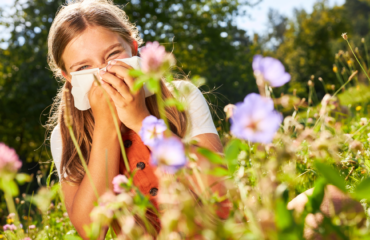As the Alaskan landscape transforms from a blanket of snow to a tapestry of blooming flora, many of us find ourselves grappling with the unwelcome companion of spring allergies. While the season is a herald of warmer days and outdoor adventures, it also brings a surge of allergens that can significantly affect our daily lives. Recognizing the symptoms and understanding how to manage them effectively is crucial for anyone looking to fully embrace and enjoy springtime in Alaska. Join us as we delve into the common allergens specific to our region, identify symptoms, and explore strategies for prevention and treatment.
Common Spring Allergens in Alaska
According to a Municipality of Anchorage report, spring brings with it a host of allergens that can significantly impact those with allergic rhinitis or “hay fever.” Understanding these common allergens is crucial for the 10 to 20% of the population affected, allowing them to modify their exposure or adjust medications accordingly.
Tree Pollen:
In Anchorage, tree pollen levels typically peak with the onset of warmer weather, starting with birch and willow in the second or third week of May. Birch, in particular, is noted for its high allergenic potential, with concentrations in Alaska among the highest in the country. Interestingly, peak birch pollen levels occur in alternate years, with a high year usually followed by a lower year.
While not as concentrated as birch, Alder pollen has a longer season and can be found for up to two months. Spruce pollen, prevalent in June through mid-July, is considered less allergenic. Although visible with its fluff in mid-July, Cottonwood releases pollen earlier, with the fluff serving as a seed disperser rather than an allergen.
Grass Pollen & Weeds:
From June through August, grass pollen appears, affecting sensitive individuals despite typically not reaching the “high” levels as defined by the National Allergy Bureau.
Various weeds, including nettle, plantain, and dock, contribute to the allergen load in July and August, typically remaining in the ‘low’ category.
Mold:
While present throughout the year, mold spores typically peak in concentration during the late summer months of July and August. Warm temperatures, late summer rain, and abundant decaying plant material contribute to the proliferation of mold in the area.
By being aware of when your allergy is expected to hit, you can take proactive steps to manage your exposure and improve your quality of life outdoors.
Symptoms of Spring Allergies
As the Alaskan spring awakens, so do the allergies for many, bringing a familiar set of discomforting symptoms. Here is what you can expect if you have allergies.
- Sneezing: Frequent, sometimes uncontrollable sneezing is a hallmark sign of an allergic reaction to spring pollen.
- Nasal Congestion: Allergens can cause the nasal passages to swell and produce excess mucus, leading to congestion.
- Itchy Eyes: Contact with allergens often results in itchy, watery, red eyes.
- Throat Irritation: Allergens can irritate the throat, causing soreness and an itchy sensation.
How to Identify Your Allergens
Determining the specific allergens that trigger your symptoms is crucial to effective management. Allergists use skin prick tests, blood tests, and a detailed examination of your medical history to pinpoint the exact causes of your allergic reactions.
Understanding what you’re allergic to allows you to avoid those triggers better and tailor your treatment plan. This personalized approach can significantly improve your quality of life during allergy season.
That’s why we suggest getting an allergy test if you think you may have seasonal allergies.
For more information on avoiding seasonal allergies and the treatments available, we suggest clicking HERE for our in-depth blog!
Book an Appointment with First Care Today
For those struggling with spring allergies, our Primary Care Unit at First Care is here to help. Offering comprehensive care for acute illnesses, injuries, and routine health maintenance, we’re open Monday through Friday, 9 a.m. to 5 p.m., and weekends from 10 a.m. to 6 p.m. Don’t let allergies hold you back—book your appointment today and breathe easier this spring.





